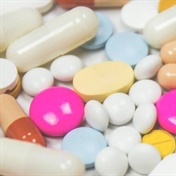How often have you tossed aside the information leaflet inside a box of medicine without reading it? How many times have you briefly skimmed only the dosage, directions and possible side effects before taking the product?
While most of us trust our doctors and pharmacists to guide us about how to take prescription medicines and over-the-counter products, it is vital that consumers take charge of their own health and safety by learning to ‘decode’ the jargon in medicine package inserts.
All package inserts – or patient information leaflets – contain essential information about a medicinal product and follow a standard format.
When you receive a product, carefully review the package insert before taking your first dose. If you are confused about any of the facts – or concerned about side effects or special precautions – ask your doctor or pharmacist to explain the information to you.
Top tips
- Never follow package insert instructions that contradict what your doctor has told you – always check with your doctor first.
- Keep your package inserts in a safe place so that you can refer to them again in future.
How to read a package insert
The insert will contain several sections, including the name of the product, how it works, who can and cannot take it, dosage directions and special precautions.
The format will usually be in the following order :
- The brand name (and/or generic equivalent) of the product.
- The composition: What ingredients make up the product.
- The pharmacological classification: The pharmaceutical category under which the brand falls.
- Clinical pharmacology: This tells you how the medicine works, its chemical make-up, its form (liquid, capsule or powder), facts about absorption and elimination, clinical studies or trials, how it is taken (by mouth or injection), a list of inactive ingredients, potential allergens and how it affects different population groups, such as the elderly, women or children.
- Indications and usage: What is the drug used for? Examples might be high blood pressure or migraines. Bear in mind that your doctor may prescribe the product for a condition not listed here.
- Contra-indications: This important section explains when the medicine should not be taken. Some patients have medical conditions or allergies which exclude them from safely taking the product.
-
Warnings or side effects. Depending on the strength or type of product, this section may be quite long, since some drugs can cause very serious side effects if not taken correctly or when interacting with other medical conditions or health problems in individuals.
- Understanding common side effects in plain language:
- Anaphylaxis: A severe and multi-system reaction to an ingredient
- Tachycardia: Rapid or accelerated heartbeat
- Phototoxicity: Reaction to light, light sensitivity
- Precordial pain: Pain around the torso near the heart and stomach
- Psychosis: A severe mental disorder, with or without organic damage, characterized by derangement of personality and loss of contact with reality and causing deterioration of normal social functioning
- Oedema: Accumulation of fluid between cells
- Agranulocytosis: An acute disease marked by high fever and a sharp drop in circulating granular white blood cells
- Thrombocytopenia: An abnormal decrease in the number of platelets in circulatory blood
- Precautions: This is practical information about how to take the drug safely. For example, you may not be allowed to drink alcohol, could become drowsy after a dose or might be excluded from taking the medication if you are on certain other medications at the same time.
- Adverse reactions: A detailed list of all side effects observed in every study done on the drug. The side effects under ‘warnings’ will list only the most dangerous side effects.
- Dependence or drug abuse: Facts about possible physical dependence on the product after prolonged use or abuse, if applicable.
- Overdosage: Explains what happens in the event of an overdose – and what action to take in this situation. In some cases, emergency treatment at a hospital may be advised, for example.
- Dosage and administration: Recommended dosages for various ages, patients or conditions.
- How supplied: A detailed description of what the product looks like, including shape, colour, any surface markings and storage information.
Become safety-savvy!
Some active ingredients can have harmful side effects. Always look for or ask your doctor for products which have undergone clinical trials and which do not have side effects or adverse reactions and medication, which does not interact with any other medication you may be taking.
(Brought to you in the interests of family wellness and health by Prospan, May 2011)
Read more:




 Publications
Publications
 Partners
Partners










